Leaked Documents Show Details of Scott Walker’s Wisconsin Campaign Controversy
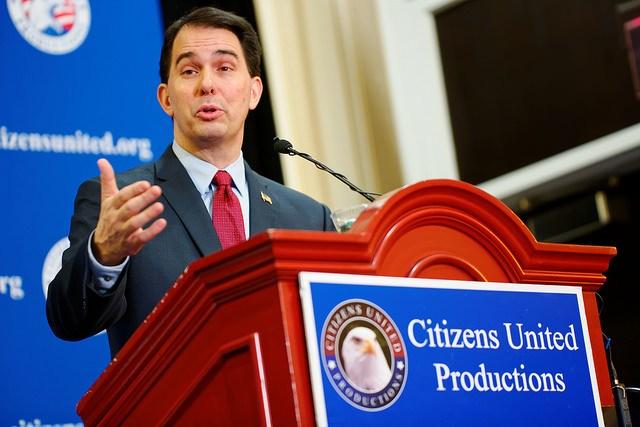

Our democratic system of government was established to balance the competition between self-interest and the concerns of the greater good. Since the earliest days, those who gained economic power, be it individuals or corporations, have often tried to use that power to bend the system and its rules to their liking. Sometimes they succeeded, usually by using their wealth to influence the political election process. In the 229 years since our nation’s birth, the problem is as bad today as it has ever been.
A recent story in the Guardian based on leaked court documents illustrates this perfectly. It focuses on an investigation of alleged “criminal campaign-finance violations by the campaign committee of Scott Walker," Wisconsin governor and former Republican presidential candidate.
What’s interesting about this case is that the state’s supreme court not only halted the investigation in July 2015, calling the defendants “wholly innocent of any wrongdoing,” but it also ordered all records regarding the matter be destroyed. But one set of documents, some 1,500 pages, survived and were obtained by the Guardian.
By 2011 Walker, working with a hard conservative legislature, managed to successfully strip public worker unions of their collective bargaining rights. He had become a poster boy for conservatives and a lightning rod for progressives. Outrage at this action spread quickly across the nation and some 100,000 protestors assembled in front of the state capitol to register their disapproval. Subject to a recall election, he personally reached out to wealthy right-wing business leaders -- including Donald Trump, who poured cash into a “dark money” group called the Wisconsin Club for Growth (WCfG). Since WCfG was registered as a nonprofit, it was not required to disclose any details about the contributions it received. That also meant contributions given in this manner were not subject to the legal limits that apply to contributions made directly to candidates.
With the $12 million that he received in this manner, and a great deal more from other sources, Walker launched an all-out media blitz, including “a mass of micro-targeted mail-outs and TV advertising,” and won the election in Wisconsin, reports Ed Pilkington of the Guardian. Some of those funds also went to help conservative state legislators that had also been recalled. Ultimately four of the six recalled senators kept their seats, enough to retain a Republican majority by one vote. All told, Republicans outspent Democrats in the campaign by $58.7 million to $21.9 million.
Sadly, this is how things get done in American politics today. But the question remains: Was it legal?
That’s what the investigation sought to find out. Wisconsin law explicitly states that corporations are not allowed to make political contributions. They are allowed to give to advocacy groups but only if those groups are independent of any candidate. Details revealed a pattern in which Walker personally met with these tycoons (15 are listed here). Then, within a week or two, a large check would arrive for WCfG.
From the viewpoint of Wisconsin’s judicial system, these accusations of illegal activity were little more than “tyrannical retribution of arbitrary or capricious governmental prosecution,” Pilkington wrote last week.
But a number of campaign-finance monitoring groups, such as the Center for Media and Democracy and the Brennan Center and Common Cause, have questioned the impartiality of the Wisconsin court and asked the U.S. Supreme Court to weigh in on the matter.
Certainly, it’s unusual for a court to order all records pertaining to a criminal investigation be destroyed. In fact, the court later revised that order, asking that the documents be placed under seal. But the fact that they even considered doing such a thing should raise a flag.
Indeed, one of the state supreme court judges, David Prosser, was up for re-election at the same time as the recall election. Walker’s team was very concerned about preserving a conservative majority on the court. And emails revealed in the probe show members of Walker’s team acknowledging that WCfG “is leading the coalition to maintain the court.”
So we have a judge ruling to halt an investigation into a group that is working to help re-elect him. Mightn’t there be a slight conflict of interest there? Prosser was asked to recuse himself from ruling on the investigation, but he refused. In the end, some $3.5 million was spent on re-electing Prosser, an unheard-of amount for a judge. Typically judges fund their own modest campaigns themselves, and are limited by law to a cap of $400,000.
At a time when concerns over money in politics has reached a fever pitch on both sides, with a growing movement to overturn the Citizens United decision which clearly opened these flood gates, it will certainly be interesting to see what the Supreme Court has to say about what happened in Wisconsin.
Image credit: Michael Vadon: Flickr Creative Commons
Ecotourism in Maine: Dive-In Theater Wows Audiences With Sea Creatures


Since childhood, Ed Monat was fascinated by the ocean and all things underwater. He now channels this passion to put on a delightful two-hour undersea tour of Frenchman Bay in Midcoast Maine. The Dive-In Theater boat cruise with Diver Ed has an intriguing cast of characters, including Captain Evil and Mini Ed (a small plastic figure of Diver Ed), with guest appearances from sea creatures.
There isn't a dull moment for the 60 passengers during a Dive-In Theater show. After finding a spot to anchor, Diver Ed encourages the children aboard to push him off his own boat. He then communicates with the passengers using audio and video equipment. Diver Ed and his trusty assistant, Mini Ed, explore the creatures on the seafloor in a truly theatrical fashion. The Ed team fills a bag with their finds, including lobster, sand dollars, sea stars, and crabs. Once on the surface, Diver Ed organizes the creatures into tanks and talks about their features and anatomy,
The children aboard remain engaged through the dynamic tour, as Diver Ed squirts them with sea cucumbers and makes lots of butt jokes. The crew puts rubber bands on lobsters' claws and creates an interactive touch tank for the passengers to explore. At the end of the show, the sea creatures are safely returned home.
The underwater world is a second home for Diver Ed, who has been diving since he was 16 and spent over 35,000 hours underwater. His father was a lobster fisherman, and the two of them took their first diving lessons together. Diver Ed went on to study marine ecology at the College of the Atlantic in Bar Harbor, Maine, was the harbormaster for the town of Bar Harbor for years, and served as a marine ecologist for the Smithsonian.
"I'm fascinated by all things underwater and I like showing parts of the ocean to people who don't usually see it," Diver Ed explained."It's an exciting world!"
This passion motivated Diver Ed to feature a Sea Creature of the Week as harbormaster and to bring touch tanks into local schools. The Dive-In Theater allows Diver Ed to give an even richer experience to his audience that isn't possible on land.
Because Diver Ed spends so much time on the seafloor, he is also aware of changes over time. He has witnessed a decline in anemones, blood stars, and sponges, while lobster seems more prevalent.
Research shows the Gulf of Maine which encompasses Frenchman is warming at an alarming rate. Some fisherman report that this is causing some species to migrate north in search of colder waters.
For readers that want to learn more about the undersea world, Diver's Ed cruises come highly recommended. It is truly a pleasure to learn from someone who is so passionate about what he does.
Image credits: 1) Captain Evil; 2) Sarah Lozanova
Do Soda Taxes Benefit the Environment?
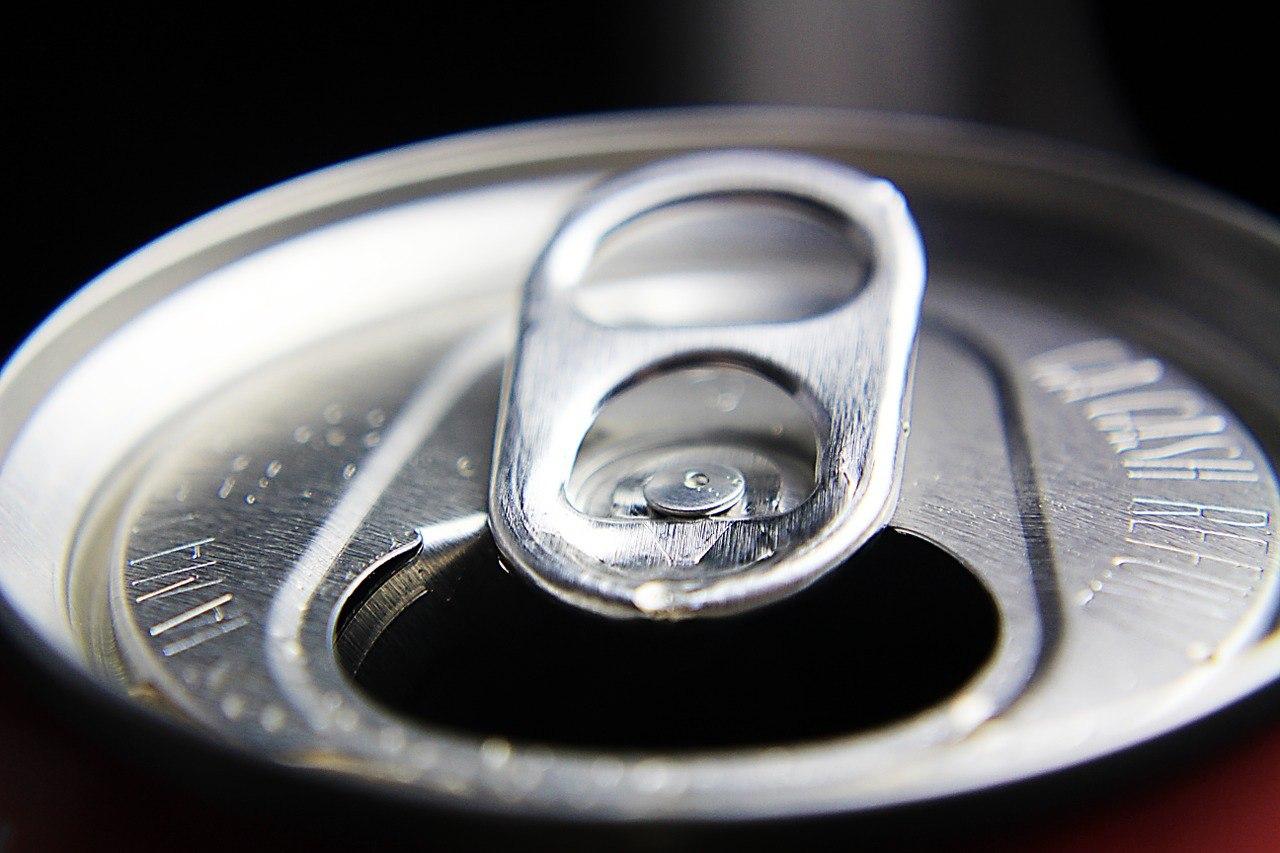

By Holly Whitman
If it seems like taxes have been around since the beginning of time, you are almost right, although some are not quite as obvious as others. For example, since the federal tax on cigarettes is added into the retail price, you may sometimes forget that cigarette manufactures pass the cost on to the buyer. Unless, that is, you live in one of the states that adds an additional tax.
As of August 1, New York added the highest state tax at $4.35 a pack, followed by Connecticut with $3.90. If that just made you swear off smoking, you wouldn’t be alone. With an increase both in taxes on cigarettes and places where smoking is prohibited, the number of actual smokers is decreasing.
Once the medical industry saw how raising taxes on cigarettes improved the statistics on non-smokers, they began to look at another leading health issue in the country: obesity.
The next “big” thing
If a bowl with two scoops of chocolate ice cream was placed beside a can of soda, which would you think was worse for you? If you answered ice cream, you’d not only be wrong, but also probably surprised. One can of soda can have as much as ten teaspoons of sugar in it!
Suggestions for how to improve America’s waistlines focused on what made a difference to smokers: selective banning, labeling, advertising — or lack thereof — and the big one: taxes.
The “big” ban
In 2012, New York City Mayor Michael Bloomberg stirred up New Yorkers when he proposed restricting the size of soft drinks sold in restaurants and movie theaters to 16 ounces or less. While his proposal was approved originally by the Department of Health, it didn’t last. After a massive advertising campaign by the soft drink industry, the New York Supreme Court overruled the ban in 2014.
While the fast food industry has made some changes in their menus to include healthier options, they often trade off the benefits by highly promoting less healthy items.
The sweetened drink tax
In 2009, there were 33 states that passed a sweetened drink tax, at an average of 5.2%. But in 2014, it was Berkeley, California that stepped it up a notch and led the push for even more by adding a local tax on a long list of drinks with added sugar. Controversial at the time, Berkeley stood alone for more than a year until Philadelphia, Pennsylvania passed a similar local tax.
As more cities on both sides of the country, especially large ones like New York City, begin to look into adding a sugar tax, the soda industry realized they could wind up on the losing end and filed a lawsuit against Philadelphia on the grounds that the tax violated state and federal law.
Environmental impacts
The environment, green living, recycling and sustainability have all been buzz words since someone first complained that summers seemed hotter and winters longer. It may seem unrelated, but taxes such as these actually have an impact on the environment as well. For example, while the medical industry applauds the decrease in smokers as a positive impact on health, the cigarette tax also had an impact on the environment from the reduction in cigarette butt pollution.
It didn’t take long for attention to then be drawn to the manufacture of aluminum cans and what could be done to reduce their impact on the environment. There is a great deal of space devoted to un-recycled aluminum cans in land fills, energy spent on recycling and the manufacturing of new cans.
Where aluminum begins
Aluminum makes up 7 percent of the earth’s crust, but it doesn’t start out as the shiny silver material you associate with it. Instead, aluminum is refined from bauxite, which is mined largely in countries along the equator. The process of mining creates its own impact on the environment with dust, waste disposal, erosion, noise and changes in the landscape including water, vegetation and wildlife.
It is estimated that the known amounts of bauxite will last roughly another one hundred years. However, currently undiscovered sources of bauxite could extend that by more than two hundred years.
A correlation
If a sugar tax, explicit cautionary labels and limitations on drink size have the same impact that taxes, labeling, advertising and bans had on cigarettes, there is a good possibility that health concerns will also be positively impacted.
Any reduction in the manufacture of, recycling costs of or use of land fills for aluminum cans will have a positive impact on the environment. With a decreased demand for aluminum to manufacture soda cans, there will be a substantial decrease in the negative aspects of mining for bauxite. Companies will not need to reseed and restore vegetation to areas that have been mined, which is beneficial to wildlife in the areas that might have been displaced by the mining.
Image credit: Pixabay
Holly Whitman is a writer and journalist tackling global issues from environmental problems to human rights. You can find her on Twitter at @hollykwhitman or her blog, Only Slightly Biased.
£735m Waltham Forest Pension Fund ‘commits’ first to divest from fossil fuels


3p Weekend: Use These Labels and Resources to Know Your Food
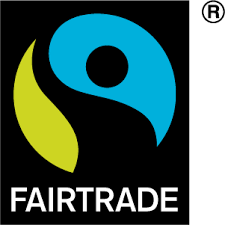

With a busy week behind you and the weekend within reach, there’s no shame in taking things a bit easy on Friday afternoon. With this in mind, every Friday TriplePundit will give you an easy read on a topic you care about. So, take a break from those endless email threads and spend five minutes catching up on the latest trends in sustainability and business.
American shoppers are becoming increasingly conscious about what's in their food, as is evident in the backlash against the country's first GMO-labeling legislation passed earlier this year.
But a growing number of food and consumer packaged goods (CPG) companies aren't waiting for the government to mandate ingredients disclosure and supply chain improvements. They're turning to third-party verifiers in an effort to appeal to knowledge-hungry buyers.
So, if you want to learn more about what's in your food, this drill-down of common food labels can help.
USDA Organic
In the world of organic labeling, accept no substitutions. Companies that sell or label a product as "organic" when they know it does not meet USDA standards can be fined up to $11,000 for each violation.
The USDA Organic label appears on thousands of food products from a bevy of major brands. It calls for a specific set of farming practices, such as the elimination of certain pesticides and fertilizers, to minimize impact on the environment and human health.
For animal products, USDA organic requires some outdoor access -- although it does not specify the quality or quantity.
Transitional organic
Despite all the benefits organic agriculture has to offer, it can be expensive for many farmers to get certified. And it takes three years to earn the coveted certification, during which time farmers spend money to change their practices without getting a higher premium for their products.
Kellogg subsidiary Kashi -- known best for cereals and snack bars -- set out to solve this problem and help more farmers on their journey to organic. Through a partnership with Quality Assurance International (QAI) and Hesco, the company launched the Certified Transitional label this spring. The label recognizes farmers for the work they do in those three years before going fully organic, and helps Kashi find new suppliers.
Only two months later, Kashi released its first product containing Certified Transitional ingredients -- a sweet breakfast cereal fittingly called Dark Cocoa Karma Shredded Wheat Biscuits. The certification will soon be apply to any crop, from fruits and grains to cotton.
3p's Nick Aster caught up with Nicole Nestojko, senior director of supply chain for Kashi, at the 2016 Sustainable Brands Conference to discuss further. Click here to watch the video.
Fair Trade Certified
https://youtu.be/7K4G5-ydhS0
Shoppers may notice the Fair Trade Certified label on products like coffee and cocoa. The label indicates a product was made with respect to people and planet.
Fairtrade America, which upholds the Fair Trade Certification for U.S. goods, puts producers against a rigorous set of social, environmental and economic standards. Its requirements seek seek to promote safe and healthy working conditions, protect the environment, enable transparency, and empower communities to build strong, thriving businesses. Fair Trade USA also certifies fair trade products in the U.S.
When perusing international products, you might also see the Fair Trade International logo seen at right. Fair Trade International is a separate organization which also has strong Fair Trade standards.
Rainforest Alliance Certified
You may have noticed a little green frog on the window of your local coffee shop, a bushel of fruit at the market or a chocolate bar at your favorite health-food haunt. Emblematic of Rainforest Alliance certification, the frog ensures key commodities shoppers crave do not contribute to deforestation.
Products bearing the seal originate on -- or contain ingredients sourced from -- Rainforest Alliance Certified farms or forests. These areas are managed according to rigorous criteria designed to conserve wildlife, safeguard soils and waterways, protect workers and their communities, and increase livelihoods, the organization says.
In addition to common food commodities -- such as cocoa, coffee, tea and palm oil -- the Alliance also certifies tourism lodges, which must meet its comprehensive sustainability standards for tourism.
Non-GMO Project
The Non-GMO Project Standard is reserved for products with a truly GMO-free supply chain. The consensus-based Standard is modified and opened for public comment regularly to keep it rigorous, current and collaborative, the nonprofit says.
Thousands of products bear the Non-GMO Project butterfly seal. And several large brands, including Dannon, are working to place the label on their products soon.
Animal welfare standards
In a 2013 survey conducted by the American Humane Association, 89 percent of those polled said they were very concerned about farm animal welfare, and 74 percent said they were willing to pay more for humanely-raised meat, dairy and eggs.
This market shift has food producers scrambling to add animal welfare labels to their products. But shoppers should be aware of what these labels mean before they buy.
- Cage-free: In standard systems, egg-laying hens are confined to small battery cages measuring only 67 inches. A growing awareness of this cruel practice inspired companies to go cage-free en masse. Almost 200 U.S. companies, including every major grocery store and fast-food chain, have pledged to transition to cage-free eggs by 2025.
- Free range: While cage-free systems only guarantee hens aren't confined to battery cages, free range agriculture for chickens and turkeys goes one step further. The system calls for animals to be given outdoor access, although the Humane Society of the United States notes it does not specify the quality or quantity.
- Grass-fed: Grass-fed is the free-range equivalent for ruminant animals (cows, sheep and goats). As the name implies, grass-fed animals subsist on grass for their entire lives, with the exception of their mothers' milk, requiring access to pasture.
- Hormone free: This label on milk and dairy products means dairy cows were not treated with hormones to increase milk production. These labels may also appear on beef.
- Animal Welfare Approved: Animal Welfare Approved is a program of the Animal Welfare Institute. In a nutshell, this standard: requires animals to be raised on pasture or range, prohibits dual production (raising some animals industrially while keeping a small set according to high welfare standards, awards approval only to family farmers and incorporates comprehensive standards for high welfare farming. Compliance is verified through auditing by the labeling program.
- Certified Humane: Certified Humane is a program of Humane Farm Animal Care. Producers must meet breed-specific animal care standards, from birth through slaughter. Animals are never kept in cages, crates, or tie stalls. Animals must be free to do what comes naturally. Animals be fed a diet of quality feed, without animal by-products, antibiotics or growth hormones. Producers must comply with food safety and environmental regulations. Processors must comply with the American Meat Institute Standards (AMI), a slaughter standard written by Dr. Temple Grandin. Compliance is ensured through third-party audits.
Seafood standards
Overfishing and human rights abuses threaten the sustainability of the seafood supply chain. But a growing number of seafood companies are seeking third-party verification to gain goodwill with customers. Look for the Marine Stewardship Council Certification seal on wild-caught fish and the Aquaculture Stewardship Council Certification seal on farmed fish.
Image credits: 1) Flickr/neetalperekh; 2) Flickr/Tim Beirbach; 3) Flickr/Sally Crossthwaite; 4) Flickr/Jasper Nance; 5) Flickr/WalmartCarbon Pricing Delivers Results, But Much Work Lies Ahead


More companies are incorporating internal carbon pricing to prepare for a low-carbon economy, according to research complied by CDP. But many large firms, including some noted for high rates of carbon emissions, have yet to do so. These companies could eventually find themselves at a disadvantage as their competitors become more efficient, and resilient, through transforming their business models and investing in clean-energy technologies. As a result, those companies falling behind on this practice could be putting their investors at risk.
Overall, the trend on imposing an internal price on carbon is a positive one. Of the companies responding to CDP's survey, 1,249 said they had an internal carbon price in place, a 23 percent increase from 2015. And almost 150 of those companies told CDP they incorporated the carbon price deep within their operations and long-term strategic plans.
The general feedback provided to CDP was that such policies help companies move beyond the ability to achieve their emissions-reduction targets. A carbon price also sparks incentives for companies to shift their resources to low-carbon activities, make the business case for new research and development projects, and pinpoint hidden risks and opportunities throughout their operations and even supply chains.
Just look at Microsoft. Four years ago, the software giant announced it would adopt an internal carbon price in order to become carbon neutral. Last year, Microsoft scored plenty of buzz when it claimed such internal measures saved the company at least $10 million annually. But execs insist this is about more than saving money and reducing inefficiencies: The carbon price arguably instilled a culture of environmental responsibility and innovation throughout the company. The U.N. Framework Convention on Climate Change (UNFCCC), which organizes the annual COP climate talks, described Microsoft’s carbon price as a model that is “simple, repeatable and scalable.”
Microsoft in turn has funneled those internal carbon fees to support investments in energy efficiency programs, investments in renewables and carbon offset projects in 16 nations to help those societies prepare for a low-carbon economy.
For those who still insist that taking on policies to address climate change such as an internal price on carbon is a business killer, they should study Microsoft’s stock price. Trading in the low $30 range four years ago, Microsoft shares are now trading at over $57 as of press time. The company has become more efficient and improved its reputation amongst its stakeholders, and has been doing so while pleasing its shareholders when they open their brokerage statements.
Other multinational companies that have aggressive carbon pricing mechanisms, and show measurable results, include the utility company SUEZ, Novartis, Nissan and the French multinational manufacturer Saint-Gobain.
And one trend that should give a wake-up call to the U.S. energy and utilities sectors is that worldwide, these industries had the highest rate of companies reporting that disclosed some degree of a carbon pricing procedure. For example, the French utility multinational Engie revealed that last year, its internal carbon pricing led the company to decide against investing in new coal projects. The company believes now that more countries will turn away from coal-fired plants as countries and businesses increasingly adopt some form of a carbon price or tax.
Despite this progress, CDP insists that much work lies ahead. Only about one in five companies that responded to the NGO’s survey said they currently have a carbon pricing plan in place. And while many companies have said they will adopt such a policy in the next few years, at least 500 said they had no plans to do so.
To be fair, we are still in the wild west of carbon pricing. Determining the value of carbon is a pesky task, akin to the current struggle society has with the pricing of water. CDP revealed that the companies’ pricing of carbon is all over the map, ranging from less than $1 to over $800 a ton. Some countries, such as South Korea and Canada, see more consistency in how companies price carbon, as regulations are already in place that mandate how it should be valued. In the U.S. and Europe, however, there is a much wider variance in how carbon is priced. Getting in the way of a more standard price is transparency: CDP said only 30 percent of the companies surveyed revealed the exact price used in their accounting procedures.
Here in the U.S., companies are leading the charge as a Congress more preoccupied with political grandstanding than having a debate over the merits of having such a nationwide policy, which would be enforced by the Securities and Exchange Commission (SEC). Public companies that implement a carbon price would provide more verifiable and transparent information to investors, instead of the vague climate change risks that the SEC required several years ago but until recently was shy when it came to enforcement. Even ExxonMobil has an internal carbon price ($80 per ton), and has insisted that the U.S. government set a revenue-neutral carbon tax – although its funding of politicians who are stridently against such a policy indicate the company’s intentions are otherwise.
Image credit: Todd A. Bishop/Flickr
One Year On, the SDGs Are Serious Business
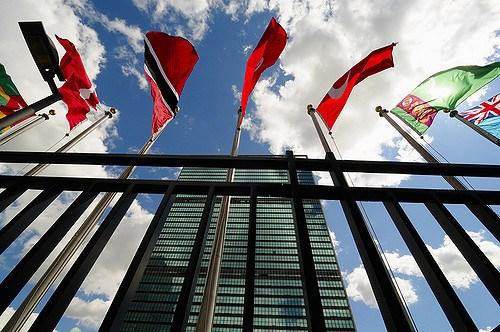

By Teresa Fogelberg
One of the most exciting and exhilarating aspects of my work as Deputy Chief Executive at GRI is getting to participate in events at the U.N. Headquarters in New York. The atmosphere at this week’s U.N. General Assembly was particularly intense given recent bombings in Chelsea, which fortunately left no one dead but caused injuries and led to an increased security presence. Couple this with the fact that leaders and dignitaries from nearly every nation in the world are in the city, and you had the makings of a supercharged event.
I was on hand for the U.N. Private Sector Forum, which brought together world leaders and more than 300 CEOs, to discuss how business can play a role in making the 2030 Development Agenda – specifically the Sustainable Development Goals (SDGs) – a reality. The forum was hosted by U.N. Secretary-General Ban Ki-moon, whose speech was something of a swan song, given his imminent departure from his post in three months. The Secretary-General spoke eloquently about the prominent role businesses must play in helping to advance the sustainable development agenda.
Outside of the General Assembly, the corridors were abuzz with rumors about who will replace Ban Ki-moon. Will it be the dark horse candidate Kristalina Georgieva? Is the U.N. ready for its first female Secretary-General? We’ll have to wait to find out.
In the midst of the gossip and the allure of mingling with heads of state and masters of business, it occurred to me that to an outsider, this might well just look like a glorified beauty pageant – with the rich and famous droning on about world peace. But the U.N. General Assembly was much more than this. It was significant for two reasons.
A fierce sense of urgency
First, no matter who I spoke with at the U.N., I walked away with the feeling that the powers-that-be finally get it. The SDGs could be our last chance to save ourselves, our children and their children. We are destroying the planet and human society by exhausting our resources. We have between now and 2030 to change that. Canada’s Prime Minister Justin Trudeau spoke of this urgency. One year ago, the world agreed on the SDGs. We now have 14 years left to achieve them.
Business takes center stage
The second reason why this year’s U.N. General Assembly is important is the fact that now we have concrete action by businesses that are engaging with and working towards the achievement of the SDGs. I can’t overstate how crucial it is that the private sector make positive contributions to the global goals. Simply put, we will not achieve the SDGs without businesses being on board.
But this doesn’t mean there is no work left to be done. There are still thousands of businesses out there that need to play a role in the SDGs, but have no idea how they can do so. And that’s why I was at the U.N.
For all those businesses I have one message: “Sustainability reporting is the first step you can take to play a role in helping us achieve the SDGs.”
Why sustainability reporting is important in the context of the SDGs
Sustainability reporting is the way businesses can demonstrate that they are measuring and managing performance on the SDGs. Through reporting, businesses can show their contributions to the global goals.
But what’s missing is a clear global system for reporting on the SDGs.
And that’s exactly what we are fixing now. I was proud to be invited to launch the new partnership between GRI and the U.N. Global Compact, called SDG Leadership through Reporting. This initiative will provide businesses with very practical advice on how to report on the SDGs, by using the GRI’s reporting framework and the Ten Principles of the U.N. Global Compact, the world’s leaders in corporate sustainability. This collaboration is timely given the confusion in the market around the multitude of new reporting techniques, tools and services that have recently been released in recent years.
In launching this new initiative, we hope to further align, and possibly even integrate, our respective frameworks, while increasing the quality of corporate reporting based on both the Ten Principles and the SDGs.
And this is not hot air, puffed out into the world only to dissipate after a few weeks or months. This partnership is a watershed event in the field of responsible business conduct. Both GRI and the U.N. Global Compact are making a public commitment to serve the global business community with four concrete ambitions: making reporting on the SDGs more relevant (by developing a list of indicators businesses can use to report against the SDGs), easier to understand (by providing technical explanations of how to conduct SDG-reporting in practice), more simple to execute (by fully integrating the SDGs into both GRI & UNGC’s reporting frameworks), and more accessible to all users and audiences.
On top of all this, GRI and the U.N. Global Compact plan to make reporting more relevant for investors; and we will focus specifically on facilitating SDG-reporting by small and medium-size enterprises.
With all of this in mind, I left the U.N. Private Sector Forum with a smile on my face. There’s still so much left to do but there can be no doubt that the SDGs have become serious business.
Image credit: Flickr/dslrnovice
Teresa Fogelberg is Deputy Chief Executive of GRI.
Scooping Up Opportunity for Women in Rwanda and Haiti
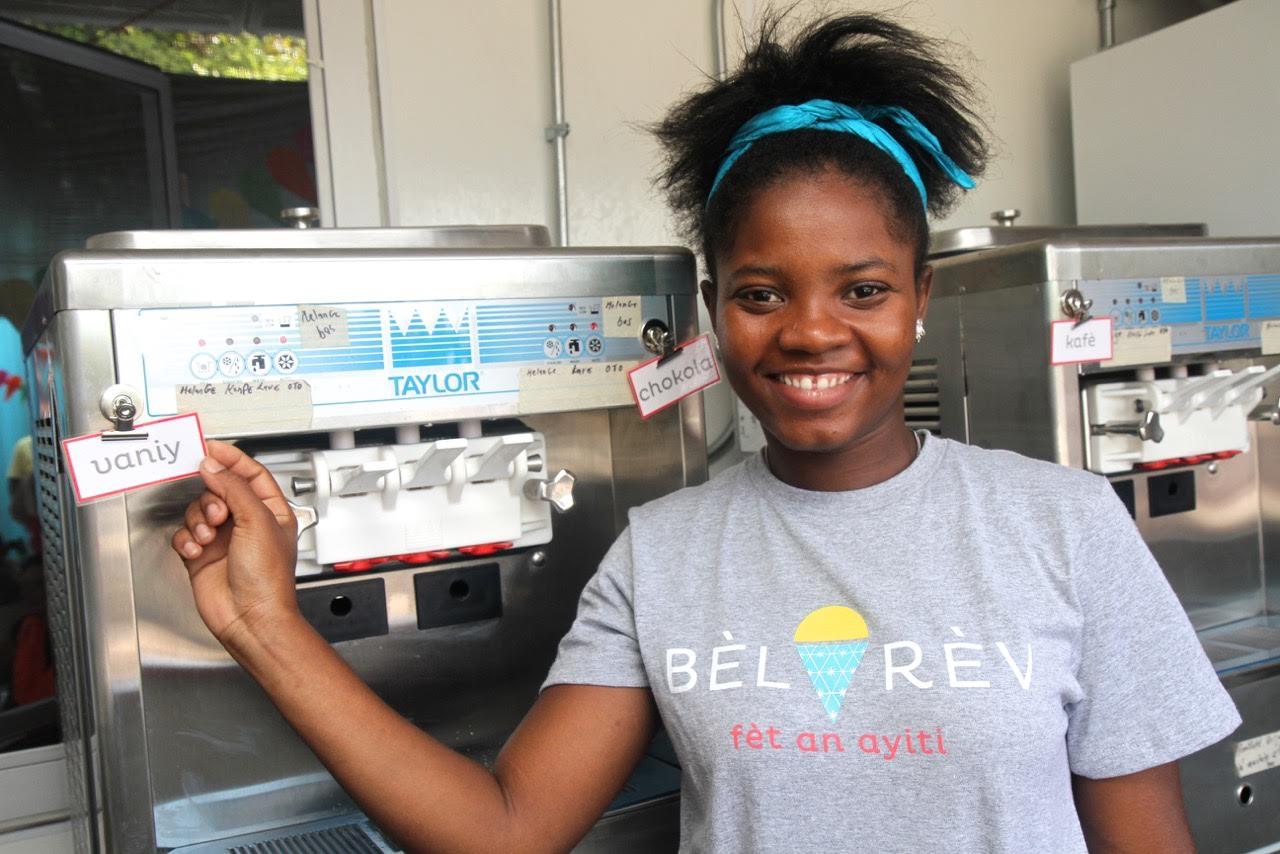

Ice cream, earthquakes and genocide typically don't correlate. But for social entrepreneur Alexis Gallivan, co-founder of Blue Marble Ice Cream, it is the very foundation for turning humanitarian nightmares into sweet dreams.
Having recently opened a parlor in Port Au Prince, Haiti, Gallivan shares with us the work behind training women via an ice cream parlor franchise as a route to economic mobility, in the aftermath of tragedy.
TriplePundit: What was the impetus behind launching your ice cream brand and subsequent social venture in Rwanda and Haiti?
Alexis Gallivan: After working in international development for nearly a decade, I grew frustrated by what I saw as a needless divide between the private and public realms. There was very little meaningful collaboration and integration of cross-sector best practices at the time—even though we ultimately shared the same general aims, albeit for different reasons. This division seemed like a terrible waste of opportunity to me, as it really limited our individual and collective impact.
In the midst of this frustration, I moved from Manhattan to Brooklyn. My move predated the borough’s artisanal food renaissance, and the ice cream fanatic in me was disappointed to discover that there were no good scoops to be had in my new neighborhood. After complaining about this for months, I was hit with my "a-ha" moment. I realized that filling this gap in the ice cream market was my chance to both satisfy my sweet tooth and push for more good in the world in an entirely new and innovative way.
So I enlisted the partnership of a dear friend, Jennie Dundas, and we launched Blue Marble Ice Cream — New York City’s only certified organic ice cream brand — in 2007. We began with a scoop shop in Brooklyn and have since expanded to two retail locations, several seasonal outposts around NYC, and a wholesale division that serves numerous retailers and restaurants across the NYC metro area and beyond. Our ice cream is also offered on JetBlue flights through their Mint Experience service, and we’re the exclusive ice cream supplier at Barclays Center in Brooklyn.
Just one year after opening our first shop in Brooklyn, Jennie and I launched our social venture, Blue Marble Dreams, with a mission to use ice cream as a means of catalyzing joy and prosperity in communities in need. We began by partnering with a group of women in Butare, Rwanda to build Inzozi Nziza (Sweet Dreams), their town’s first-ever ice cream shop. This unique social enterprise has generated stable jobs for dozens of women, built demand for area farmers, and stimulated commerce throughout the community.
In partnership with Haiti 155, another Brooklyn-based nonprofit, we have replicated the Sweet Dreams model in Port au Prince, Haiti with Bèl Rèv, which just opened in mid-September.
3p: How many women does this program intend to help? Why the focus on women?
AG: Our shop in Rwanda has trained and employed roughly thirty women since opening in 2010. In Haiti, we offered a year-long training program in business finance, operations, and culinary production to a group of approximately 25 women. A starting staff of seven women was ultimately selected, but we aim to expand the team as the business grows.
We decided to focus primarily on women for the same reasons many other organizations do: women often have less access to opportunities in the formal sectors of the economy than men and yet are more likely to use those opportunities to advance the welfare of their families and communities. So it was as much a moral decision as it was just plain business sense. Also, as women business owners ourselves who have benefitted greatly from the guidance and friendship of other women entrepreneurs over the years, we felt compelled to pass this “sisterly” support along to others.
In Rwanda, our timing coincided with a very sad but promising societal development: after the genocide, roughly 70 percent of the remaining population was female. This meant that whether the country was ready for it or not, women there had an unprecedented chance to step into roles that were previously off-limits to them. This included roles in culture, government, and the economy. Our partners were the members of Ingoma Nshya, Rwanda’s first-ever all-women drumming group. Before the genocide, women were forbidden from even touching a drum, but as the country began the process of rebuilding itself, the old rules were rewritten. We appreciated their pioneering spirit and felt that it would translate well to entrepreneurship
"Haiti does not have the same cultural impediments to women in the workforce, but there are very few formal sector jobs period - for both men and women. So our goal is to create a small business that first, provides quality training and sustainable employment initially for women, but ultimately inspires further investment in our community that in turn creates more opportunity for everyone."3p: How does this training and development work to address underlying issues such as poverty and economic development?
AG: In general, I find that training is often a neglected component of development. Training is not easy, quick or cheap, so I can understand why a lot of organizations opt to simply run things themselves. But (there) must be a clear and comprehensive transfer of knowledge and capacity if we have any hope for a real shift in our social equilibrium. Otherwise, we are just maintaining the status quo and cutting our collective potential dangerously short.
Throughout our training sessions in Rwanda and Haiti, we repeatedly emphasized that we were not preparing the participants to work in an ice cream shop. Instead, we were equipping them to run an ice cream business. For a full year before our Haitian staff even touched the ice cream equipment, for example, they studied the concepts and processes of business finance and operations. We wanted them to understand the intricate connections between the performance of the staff and the performance of the business, instilling in them a sense of responsibility and purpose and, hopefully, ensuring Bèl Rev’s long-term lasting success.
In Rwanda, we set the business up as a partnership between our nonprofit and our partners’ cooperative. We established milestones that, when reached, prompted the transfer of a portion of our shares to the cooperative. Over time, they assumed full control of the shop and have been running it independently ever since. This is how all training in development should work. It should set the local partners up to succeed autonomously, sustainably, and successfully, and allow the development organization to move on to a new community elsewhere.
3p: Who are your biggest supporters and why have you chosen these organizations as partners?
AG: The Clinton Foundation was among the first to sign on, as Bèl Rèv complemented their efforts in Haiti to spur economic growth, empower girls and women, and support small businesses. The Foundation supported us both through a generous grant and ongoing technical assistance. Through a grant from NRG Energy, the shop was built out of upcycled shipping containers and equipped with a custom solar panel system and microgrid, allowing Bèl Rèv to be energy independent.
JetBlue — which serves Blue Marble Ice Cream onboard through its Mint Experience program — has also contributed in the form of travel vouchers and cargo concessions.
The Retail Design Institute — an international association of retail design professionals — facilitated the donation of furniture (Knoll), flooring (Bolon), signage (Media Nation), and an assortment of decorative items (varied). Finally, recognizing that no ice cream shop would be complete without some happy music, Logitech stepped forward with the donation of sound system equipment.
At the local level, we have worked very hard to integrate multiple layers of local value in our operations to push our impact as deep and wide as we possibly can so that everyone can benefit in some way. As part of this effort, we have engaged numerous local partners, including a neighboring social enterprise in Haiti, Seed Apparel, to print our t-shirts (which are also manufactured in-country). Additionally, the staff aprons were designed and sewn by an artisan cooperative, Haiti Design Coop, and a custom tile mosaic was installed on the shop’s courtyard floor and front steps by a team of young Haitian artists, trained by the Art Creation Foundation for Children.
3p: What are your long-term goals for this project?
AG: Broadly speaking, our primary long-term goal in both Rwanda and Haiti is to generate as much economic opportunity for as many people as we can. This includes our staff, our suppliers, our farmers, and our fellow business community members (both current and prospective).
In Haiti, we just launched, but we have big plans for the future. Our ideas include developing micro-franchises in the form of ice cream carts “owned" by community salespeople and a wholesale division through which we would sell our ice cream base mix and potentially other products.
We’re also considering developing a licensing model that other NGOs could use to open ice cream social enterprises in their own communities and with their own constituents. In return for a one-time start-up fee and an ongoing licensing fee (based on a modest percentage of sales), we would provide our NGO clients with numerous assets, including architectural plans for a containerized shop unit, financials, equipment guides, recipes, training materials and other intellectual property. This income would enable us to further invest in our operations and ideally expand to other locations.
Regardless of how far we extend our model from the shops themselves, sustainability is vital. We have relied on grant funding to cover our start-up expenses and occasional capital expenditures that cannot be covered by regular income alone. The Rwanda business was fully self-sustaining within two years and we aim to reach this point in Haiti within 18 months. It’s critical that we’re successful with this, not only for our own purposes but also to help prove the model for other aspiring social entrepreneurs and investors.
Images courtesy of Blue Marble Dreams
Massachusetts Governor Creates Climate Change Strategy Through Executive Order


Climate change is a serious issue. It may even be the most serious issue of our day. One state recently took a big step to take climate change action. Massachusetts Gov. Charlie Baker signed an executive order last week that spells out a plan to reduce the state’s greenhouse gas emissions.
The executive order directs state agencies to do what it takes to reduce GHG emissions and build resiliency within state government operations. Specifically, the offices of the Energy and Environmental Affairs and Public Safety and Security are directed to lead the development and implementation of a statewide climate adaptation plan. Each state agency will be required to pick a climate change coordinator who will create a vulnerability assessment, plus assist with implementing and coordination efforts to tackle climate change.
The towns and cities in Massachusetts are vulnerable to climate change. Massachusetts is in danger of sea level rise caused by climate change. Thirty percent of Boston could be plunged underwater, a report by Climate Ready Boston found. Governor Baker’s executive order directs two state agencies, Energy and Environmental Affairs and Public Safety and Security to coordinate climate change preparation assistance to cities and towns in the state.
Transportation, along with the electricity and building sectors, accounts for 90 percent of the state’s GHG emissions. Gasoline and diesel fuel for road, rail, air and marine transportation accounts for 39 percent of the state’s emissions. The Baker administration will work with state and regional transportation leaders plus environment and energy agencies to create an outline for the additional steps needed to develop regional policies to reduce emissions from the transportation sector.
The executive order comes at a time when half of Massachusetts is experiencing extreme drought. More frequent droughts in the state are expected and the average number of consecutive dry days is projected to increase by one to five days. Short term droughts of one to three months are projected to increase.
“Combatting and preparing for the impacts of climate change will require a holistic approach across state and local government and collaboration with stakeholders from all corners of the Commonwealth,” said Governor Charlie Baker in a statement. “By signing this Executive Order, our administration is taking an important step to protect public health and safety, local infrastructure, small businesses, and our state’s abundant natural resources from the effects of climate change.”The executive order comes months after the highest court in Massachusetts ruled that state regulators are required to set limits on the different sources of GHG emissions. The 2008 Global Warming Solutions Act requires the state to reduces its GHG emissions by 25 percent below 1990 levels by 2020. The state argued that under the law only the Department of Environmental Protection is required to set emissions targets, not specific limits. However, environmental groups have long countered that the state isn’t doing enough to reduce emissions by 25 percent. The ruling concluded that although the DEP’s “cited regulatory initiatives are important to the Commonwealth's overall scheme of reducing greenhouse gas emissions over time, they do not fulfil the specific requirements” of the 2008 Global Warming Solutions Act.
In August, Governor Baker signed energy diversity legislation into law that requires utilities in the state to competitively obtain 1,200 megawatts (MW) of clean energy generation including hydropower, solar and onshore wind. The legislation allows for about 1,600 MW of offshore wind energy. In July, the governor signed legislation to increase hydropower in the state. Massachusetts ranks 16 among states for renewable energy generation, according to energy.gov. It ranks number six among states for installed solar energy capacity, according to rankings by Ecotech Institute.
Photo: Flickr/Dale Kruse
Target Inches Closer to Selling 100 Percent Sustainable Seafood
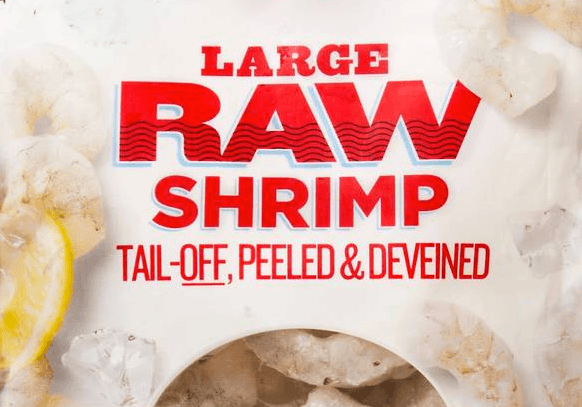

As overfishing depletes the world’s oceans and human rights abuses remain rampant throughout the fishing industry, the pressure is on retailers to ensure that only responsible seafood is sold in their stores. One company that says it is up to the task is Target.
According to a recent post on the company’s website, Target is almost there, due to close work with its environmental partner, FishWise. The Santa Cruz-based NGO works with retailers and consumers to reduce their impact on the world’s oceans through making more informed food purchasing decisions. Since 2011, the FishWise and Target have worked to ensure that all of its seafood is rated a “green” or “yellow” by the end of this fiscal year, based on the Monterey Bay Aquarium’s Seafood Watch ratings program.
The results, after several years, indicate that Target is almost there as its current fiscal comes to a close. The company claims all of its private-label seafood products have met the company’s seafood sustainability goals, and other branded products meet 97 percent of these guidelines.
As is the case with other retailers, Target had to reevaluate its entire supply chain, and assessed vendors based on everything from their human rights records to their traceability standards. FishWise works as a clearinghouse of seafood sustainability certifications, while using tools such as the certification standards set by the Marine Stewardship Council (MSC), Aquaculture Stewardship Council (ASC) and other NGOs such as the Environmental Defense Fund (EDF).
Such action by retailers is going to be necessary if the world’s fisheries stand any chance of recovering from decades of overfishing. According to the UN Food and Agriculture Organization’s (FAO) most recent annual report, the world’s fleet of 4.6 million fishing vessels are harvesting seafood at an unsustainable rate. Almost 60 percent of the world’ fisheries have been fully fished, and over 30 percent have been fished at a biologically unsustainable level. Only 10.5 percent of the world’s fisheries are “underfished,” and that percentage has been decreasing annually as trawlers venture farther to meet global demand.
Target claims its seafood supply chain transformation was “an industry-leading project,” thought that superlative is open to interpretation. Many of the world’s largest retailers have been cleaning up their seafood business over the course of several years. One of them is Walmart, which is widely recognized for have over 90 percent of its seafood certified by organizations such as the MSC and ASC.
Target should consider transferring the success it has had with its seafood products and apply similar standards to more of its grocery items. The company has said it is increasing the number of organic and sustainable products at its stores. But since it boosted the number of its food items to keep sales afloat during the 2008-2009 Great Recession, its grocery business has long been stagnant. Target cannot compete with Walmart and Costco on price, and its food items overall appear pallid compared with the more creative offerings at chains such as Whole Foods and Trader Joe’s.
But the company still has an opportunity to capitalize on the large number of consumers who occupy that lucrative middle ground: they want a nicer shopping experience than what avails them at a Walmart or within the conventional supermarket chains. However, they also do not have the budget to shop at pricey Whole Foods or Costco (or do not want or need to buy such massive amounts).
But for years, Target’s grocery section has been that forgotten corner by its customers, who stock up on housewares, clothing and personal care products, but then maybe pick up a few items such as bananas or Archer Farms goodies if they have room in their carts or time in their schedule. Most Target stores hide their grocery sections way in the back, as if they are embarrassed that they are even selling food other than seasonal holiday candy in the first place. It’s time to turn that idea on its head. More products with a conscience, which are competitively priced and attractively presented, could be the spark that lifts Target from its current doldrums. And better seafood is a start.
Image credit: Target